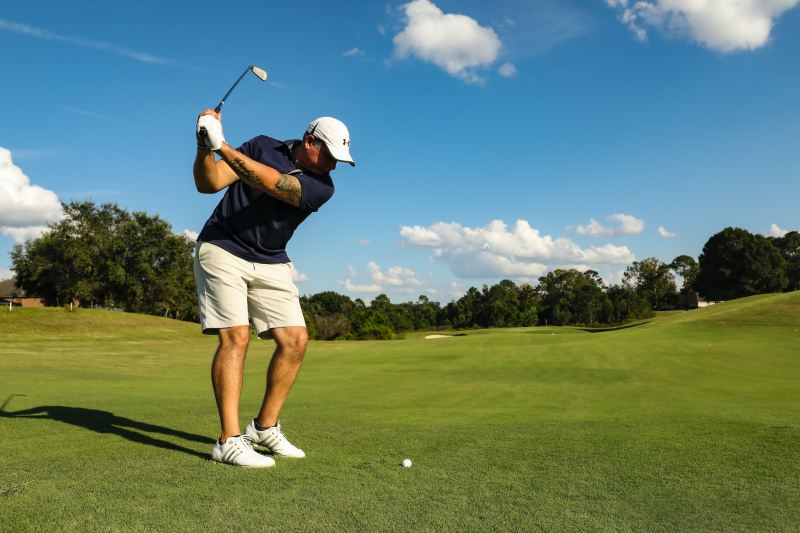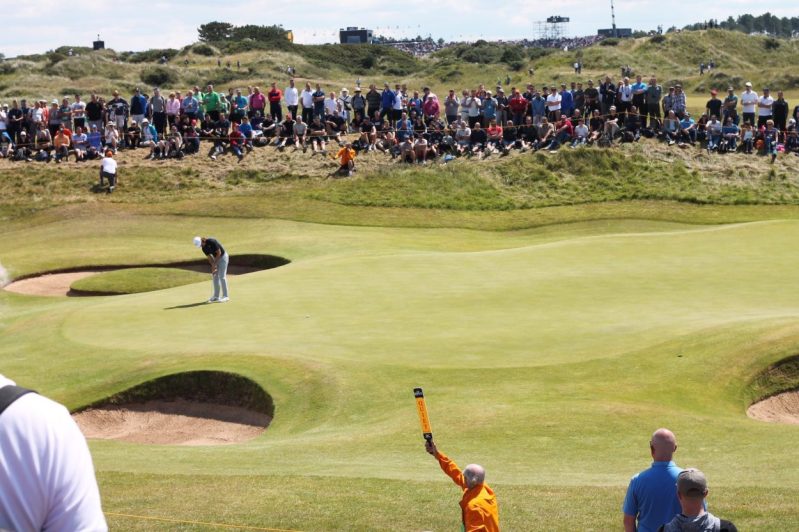
If you love the game of golf, there’s something so beautiful about watching a player just smack a golf ball so far that it looks like a bird flying away. Well, that’s sort of becoming a problem. With the average distance a golfer hits the ball increasing by 1 yard every year; existing golf courses will eventually be outgrown. To try to take things back a bit, the United States Golf Association (USGA) wants new golf balls to enter the chat that do not go the distance. There is a change coming to the game of golf that not everyone will be happy with, but everyone will have to get used to.

What a rollback means in golf terms
Kind of like when Walmart rolls back the prices for us to be able to almost afford butter; the powers that be in golf want to roll back the ball on the golf course. OK, maybe not apples to apples. But the USGA and the Royal and Ancient Golf Club (R&A) made a decision that all golf balls, at the pro and amateur levels, will be rolled back to a version that won’t go as far as the fancy ones of today do, through the way golf balls are produced and tested.
In terms of distance
- The longest driving distance of a pro on the PGA Tour would be “rolled back” by about 15 yards, which is where the longest hitters sat in the ’90s.
- Average to shorter hitters would see a drive of about 9 to 11 yards less.
- Female pro counterparts would see around 5 to 7 yards taken off their distance.
- Amateur male players would only have to worry about 3 to 5 yards of difference.
- Amateur female players would have 1 to 3 yards to make up for elsewhere.

Why is everyone concerned about how far golf balls go?
Why is this even happening? The USGA wants to stop players from seeing how far they can hit the golf ball. Yes, beating the record for the farthest ball hit is pretty cool, and bragging rights are fun, but problems come with these players driving the ball farther and farther every year.
Where are the bigger courses going to go?
Professional sports have regulated court and field sizes. Football fields are only so many yards, and basketball courts don’t magically get bigger every few years. But in golf, courses would need to increase in size soon because of the yearly increase in driving range. Roughly 15,500 golf courses are in the U.S., which accounts for just over 40% of all total courses. Where are the new golf courses supposed to go? Where does the money come from? What happens to the old courses? The answer to all of those questions is no one wants to answer those questions.

The response to the change isn’t all bad news
There is always an outcry when rules get changed in any sport. From the tuck rule in the NFL to the NBA adding the defensive three-second rule, whether it helped the sport or not, there will be naysayers and supporters hissing at each other. Stakeholders, manufacturers of the golf balls, players, and golf course owners have all had a say.
The cons aren’t the worst things
Professionals like Justin Thomas and Brandel Chamblee think the rule isn’t fair, saying only a few out of the millions who play are the ones who hit the ball so far, and that the time and effort to make the balls would be a waste. Others like Sam Burns and Bryson DeChambeau say the entertainment value is in watching those long-range hits, and taking that away kills some of the magic of the game.
Pros who are pro rollback
Legend Jack Nicklaus is on the other side, when in 2020, stated he wanted to shake the USGA into realizing land (and the money to buy the land and then build the course) is going to run out, and they need to find a solution for the long term by pulling back the distance aspect of the game.
Pro Rory McIlroy agrees, putting the average golfer in their place, saying those people won’t even notice anything in their day-to-day game, anyway. As for the pro level, McIlroy thinks it would bring about a comeback of skills professional golfers have forgotten about over the last few decades. Other pros like Andrew “Beef” Johnston and Padraig Harrington have also thrown their support behind the change to secure the longevity of the game.

When the rollback starts affecting the golf game
The rolled-back golf balls aren’t even out yet, so the change will take some time. Once perfected, the first round of approved golf balls will hit courses in January 2028 for the pros, with the regular folk getting theirs by the start of 2030. That’s plenty of time for everyone to get their complaints or compliments out and get used to the new golf balls.
Will this affect how we watch golf?
For the watching-from-your-couch fan, the difference shouldn’t even be noticeable. A gorgeous shot will be a gorgeous shot, and most people won’t be able to point out it was 10 yards shorter. For the professionals, their eagle eyes might need time to adjust, but hopefully, it will lead to them getting more creative in other aspects of the game.
The change might make the average golfer want to break a club over their golf cart or wonder how they need to change up their game. But on the professional side, there won’t be a need to worry about building courses or where that money will come from. However, players might have to hone other skills instead of relying on being a powerhouse. Sporting equipment is always being re-engineered to be better and more advanced, but in this case, the USGA and R&A want those efforts put toward making golf balls that just won’t go as far.
Editors' Recommendations
- These are the absolute best golf resorts in the world
- How many acres is a golf course?
- Tee up at the best golf resorts in the U.S.
- Our ultimate Bandon Dunes golf resort restaurant guide
- This is everything we know about the PGA Tour and LIV Golf merger



